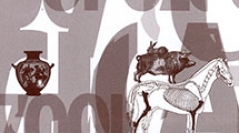

 Anthropozoologica
41 (2) - Pages 191-214
Anthropozoologica
41 (2) - Pages 191-214The contribution of this work to the understanding of the techniques and practices of animal husbandry in prehistoric societies rests on the realisation of a frame of reference based on a present-day population of hardy ewes. This frame of reference concerns a herd of 520 "pre-Alpes" ewes on the experimental farm of Carmejane, in a Mediterranean mid-altitude mountain area (Le Chaffaut, Alpes-de-Haute-Provence, France). In this breeding station oriented towards meat production (red label lambs), the demographic management of the herd presents novel characteristics: the production of lambs raised with their mothers (slaughtered at 3-4 months, class B) entails the end of service of ewes whose milk production has become reduced (slaughtered at about 6 years). The frequency of slaughter according to age, carried out in 2004, over the whole of the herd, can be presented in profiles, enabling isolation of these older individuals. They thus furnish much data on the management of the herd which are useful for the interpretation of the profiles of Neolithic slaughtering practices, thus far best recorded in terms of production. The division of the herd into groups according to the seasonal cycle also enables examination of questions concerning the lambing period and lot management. This frame of reference also constitutes a methodological tool, for evaluation of the methods of dental age estimation applied to this present-day population, and for testing the distinguishing morphological factors of sheep. After validating these different methods based on a corpus of 37 mandibles, a synthesis between stages and indications of wear is proposed, divided according to the true age of the individual sheep.
Sheep, pastoralism, south-east France, meat lambs, old females, dental stages.